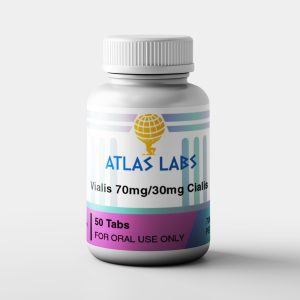Injectable vs Oral Steroids: Which One Is Better for You?
Deciding between injectable VS oral anabolic steroids marks a major step for novice bodybuilders. Many hesitate to try injectables due to fear of needles, worries over correct technique, or perceived inconvenience. Others assume oral steroids pose less risk. This breakdown strips away myths and helps you see which option aligns best with your training goals, health, and testing requirements.
What Are Oral Steroids and Why Beginners Choose Them
Common oral options include Dianabol, Anadrol, Anavar, Winstrol, Primobolan, Testosterone Undecanoate, Halotestin, and Turinabol. They appeal to beginners mainly because they’re easy to take. Simply just take a pill with water. Since many are C17-alpha alkylated, they resist complete liver breakdown and deliver faster results. For example, testosterone undecanoate peaks just five hours after ingestion.
Drawbacks of Pill-Based Steroids
- Cardiovascular stress: Orals often suppress HDL (good cholesterol) by triggering hepatic lipase, raising blood pressure and arterial plaque buildup. Anadrol, Dianabol, and Winstrol pose high risk to heart health.
- Liver toxicity: These compounds can spike liver enzymes (ALT, AST), indicating stress. Users often add liver protectants like TUDCA and avoid alcohol. Exceptions like Anavar and testosterone undecanoate cause minimal hepatic strain—you can learn more about low-risk steroids HERE.
- Reduced absorption: Many pill-based steroids are fat-soluble and best taken without food—except testosterone undecanoate, which requires a high-fat meal. Others need to be taken on an empty stomach, ideally in the morning, for maximum absorption.
Injectable Steroids: Benefits and Challenges
Injectables like Trenbolone, Deca Durabolin, Equipoise, and Methenolone Enanthate enter the muscle directly via intramuscular injection, usually in the buttocks or thigh.
Why many athletes prefer them:
- Lower liver strain: Injectables bypass the gut, and while they still pass through the liver, the workload is significantly lower.
- Healthier cholesterol profile: They don’t stimulate lipase and generally have less adverse impact on HDL levels—though they can still raise blood pressure.
Drawbacks of Injectable-Based Steroids
- Injection risks: Mistakes in technique or placement can lead to nerve damage, infections, or rarely, systemic issues. Following a proper tutorial—like the one by Dr. Nabil Ebraheim—helps prevent mishaps.
- Contagion hazards: Sharing needles can spread HIV and other bloodborne diseases.
- Injection discomfort: Certain compounds, such as testosterone propionate, sting or cause deep muscle soreness. Using sterile gear and proper technique can reduce pain.
- “Tren cough”: Trenbolone may cause sudden coughing and metallic taste if it enters a vein during injection, a common but harmless reaction.
Comparing Orals and Injectables
Injectables generally deliver higher bioavailability and less liver strain, which often translates into superior long-term health outcomes. Despite that, orals can be just as potent—sometimes even more depending on liver-stimulated IGF‑1 release and how they affect hormonal balance.
Top oral options for lower toxicity:
- Anavar (for cutting)
- Primobolan acetate (balance between muscle and fat loss)
- Testosterone Undecanoate (lean mass gains)
These can still raise costs and require monitoring of blood pressure and liver health. Supplementing with TUDCA and fish oil offers significant cardioprotective benefits, especially during oral cycles. Avoid stacking multiple orals due to added liver load.
Combining Orals and Injectables
Many effective cycles use both oral and injectable steroids—popular stacks include Dianabol/Deca or Anadrol/Winstrol. Though stacking magnifies results, it also increases strain on organs. A key rule: cycles and off-time should be equal in length, with the off-cycle being at least as long as the active period to allow full recovery.
Frequently Asked Questions
- Do injectable steroids deliver better gains?
Not always. Orals can sometimes yield superior results due to tissue-specific actions and hormonal modulation. - What’s the safest oral steroid?
Anavar, Primobolan, and Testosterone Undecanoate rank safest—although they’re more expensive. - Is stacking orals with injectables safe?
It can be. With careful dosing, proper off-time, and health monitoring.
Final Word
Neither route is bulletproof. If you prioritize heart and liver health, injectable testosterone ranks higher overall. Yet, orals remain a valid option when used responsibly and monitored correctly.
The information provided in this article is intended for educational and research purposes only. It does not constitute medical advice or a recommendation to use any substances discussed. Always consult with a licensed medical professional before beginning any supplement, peptide, or anabolic steroid protocol.
If you’re interested in exploring high-quality research compounds, you can browse our shop here.
